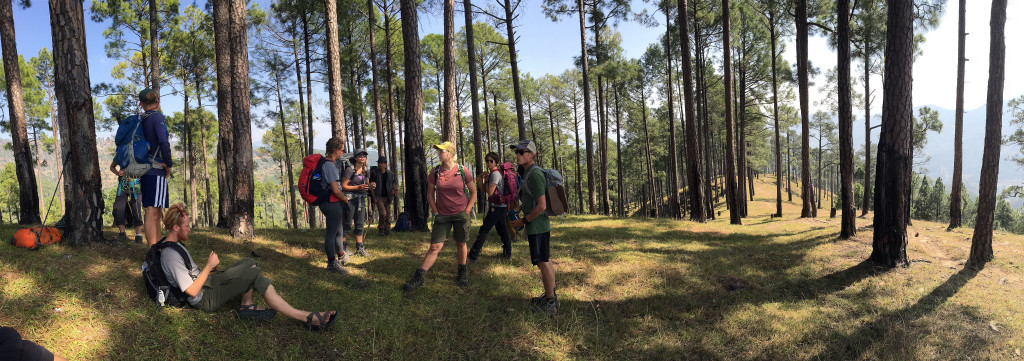In the Kumaon region of Uttarakhand, a broad reach of hills divides the plains of northern India from the arc of the High Himalaya. Here, for a hundred kilometers or more, the landscape undulates at pleasant elevations of one to three thousand meters. Towns and villages claim favorable spots on a tapestry of hill slopes and winding river valleys. The Kumaon Hills are not steep by Himalayan standards, but their contours are intricate. The road network is well-established and actively metastasizing, the roads narrow, sinuous, best negotiated by jeep.
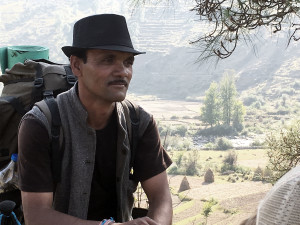
Wildlands Studies, my employer, comes to Kumaon every fall, part of a program of academic field courses accredited by Western Washington University in the United States. This year Wildlands walked away from the slopes of the high mountains, traversing hills that extend southwards from Gwaldam to Ranikhet. Our guides, Kesar and Dinesh, working with our Indian partner, Wildrift Adventures, had scouted this route during the rainy season. And they did a masterful job, finding us interesting paths, well away from the jeep tracks, with sumptuous campsites in all the right places.
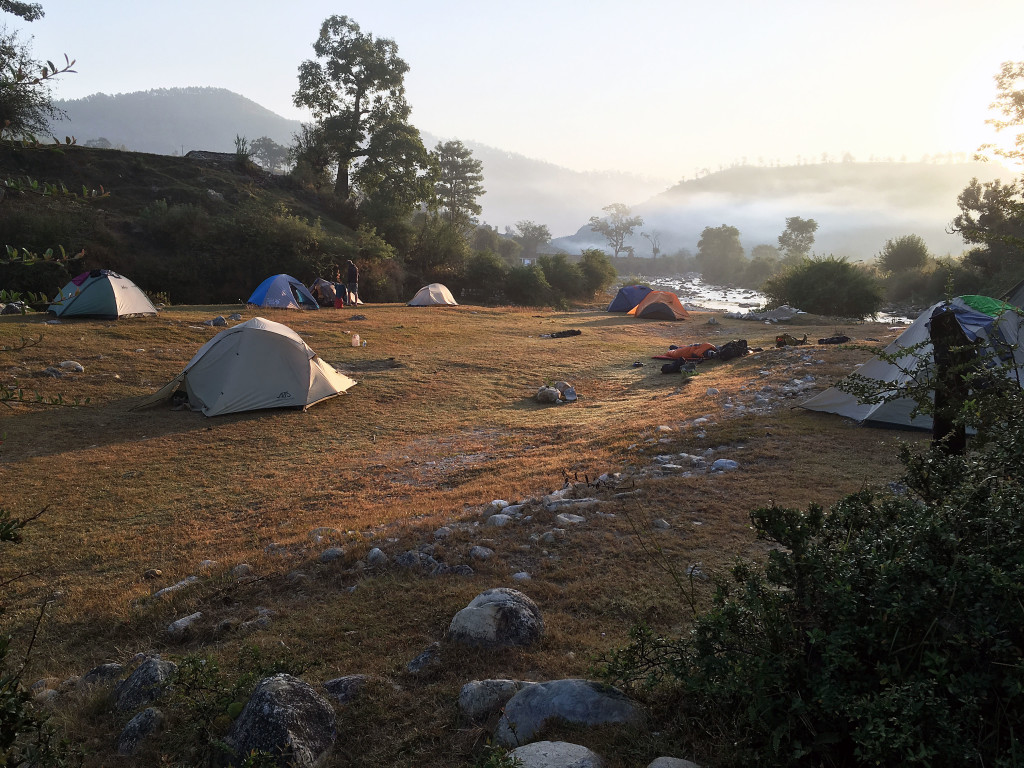
Mostly, the Kumaon Hills are forested. Some north-facing slopes and protected areas support banj oak (Quercus leucotrichophora) and arboreal rhododendron, and there are magnificent, calming stands of deodar cedar like the one at Juphal Chora (below).

Most prevalent by far, however, are forests of chir pine (Pinus roxburghii), a native conifer that was promoted in British times as a source of turpentine. Locals don’t like the pines as much as the oak forests they have replaced because oak leaves feed livestock and oak timber is better for fuel and construction. At the ecosystem scale, soils under an oak canopy hold more water, ameliorating both flood and drought. To add insult to injury, cattle slip and fall easily when intermediate slopes are blanketed in dry pine needles, and no one likes to see tumbling cattle.
None of these complaints dull the beauty and sentimental allure we North Americans see in the pine-savannas of the Kumaon Hills in October, mile on mile of straight, resinous trunks rising through a clean carpet of seasonal grass. This country is no wilderness: nearly every pine has been scored for resin extraction, and their ubiquitous burn scars were inflicted by wildfires of the anthropogenic kind. Yet the ground is mostly litter free, and the seasonal grasses are neither grazed nor have they been cut for winter feed, signaling a paucity of livestock and a low human population density. One night we camped on military land — our guides talked us in — and marveled that a landscape so deserted, yet agreeable, could persist in the world’s second most populous country.
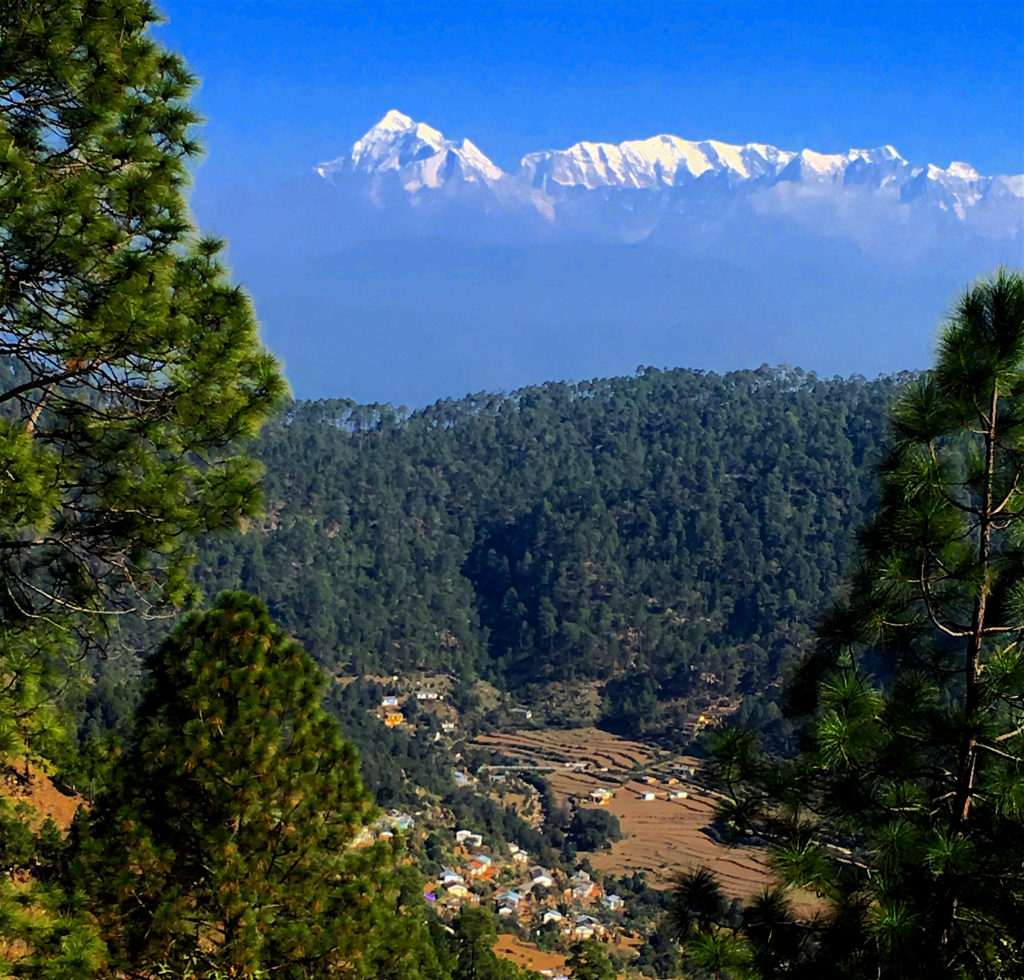
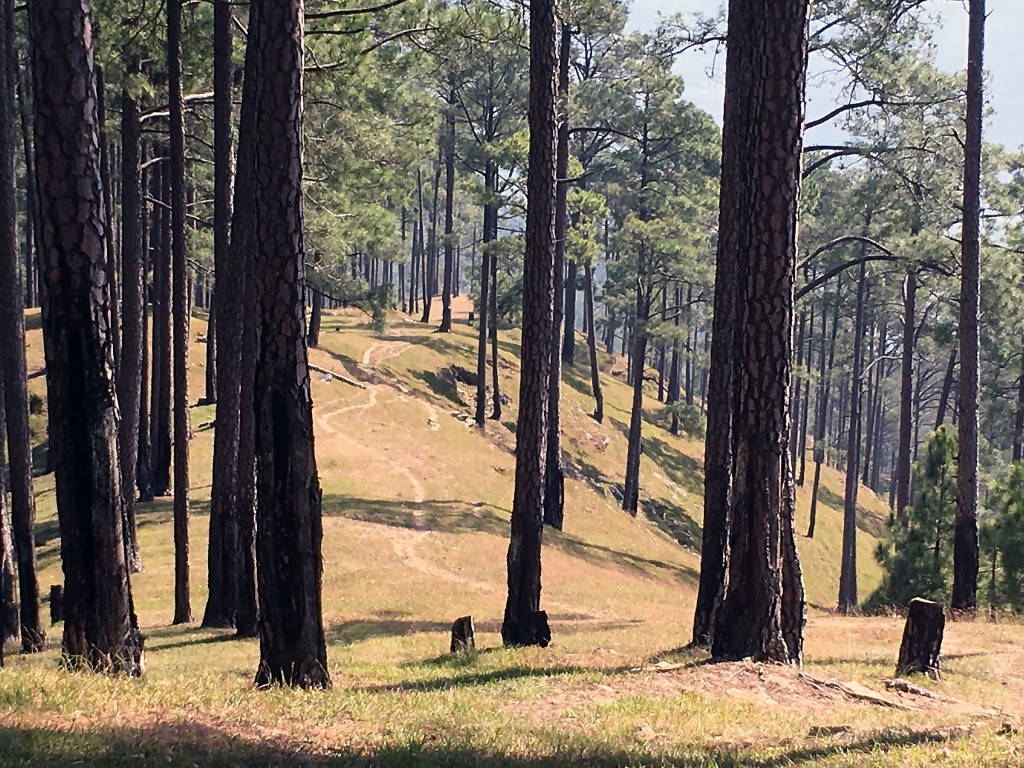
Valley bottoms in this part of Kumaon are cultivated with paddy rice in summer, wheat through the winter and spring. Walking through in late October, we see villagers ploughing terraced fields with oxen and piling dung on the fields. I’m pleased (and a little surprised) at all the paddy rice terraces in this area because this crop has vanished through much of Kumaon where it serves the interests of the local people to buy rice from the plains and to invest their time in more rewarding pursuits.
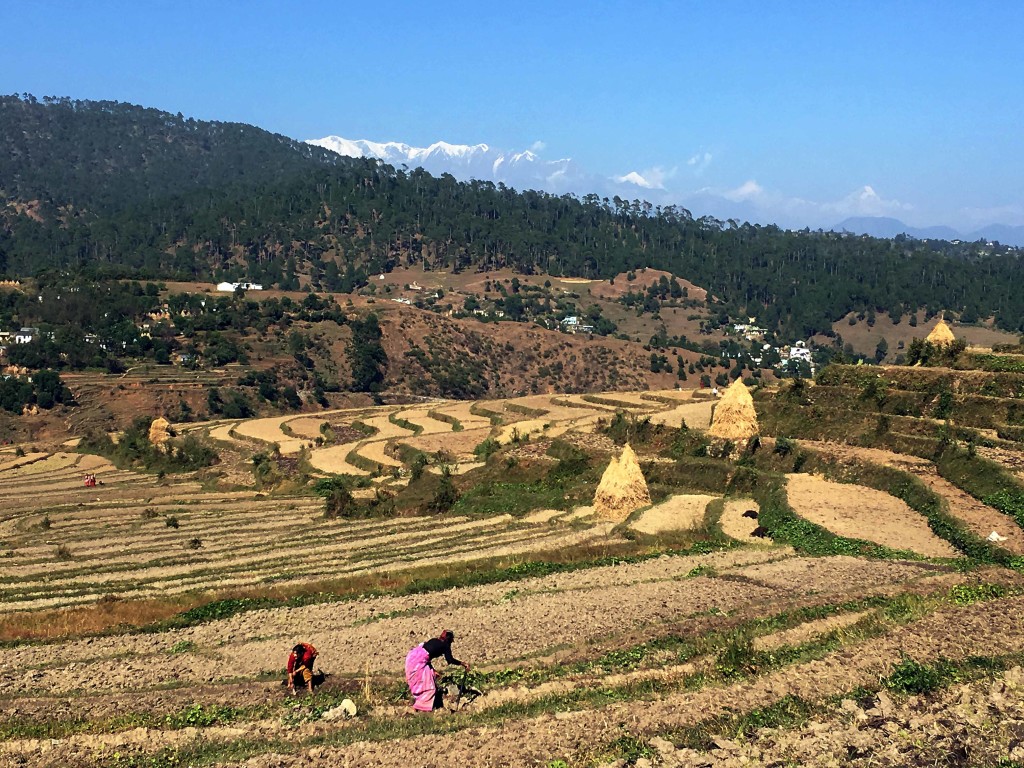
As in other parts of Kumaon, Cannabis is an important crop. Terraced fields of dank herb were under harvest at the time of our visit. In the morning, villagers strip the stalk and carry bud-laden stems in a woven basket to a flat place in the sun. Here they settle in for an afternoon of rubbing. Resin and pollen transfers from plant to skin, then is rolled into a tarry ball of charas. Bright sun is needed to bring the resin to the right consistency. Here in their native habitat, the Cannabis plants grow straight and tall, their stalks stout enough to serve as a walking stick, should the need arise.
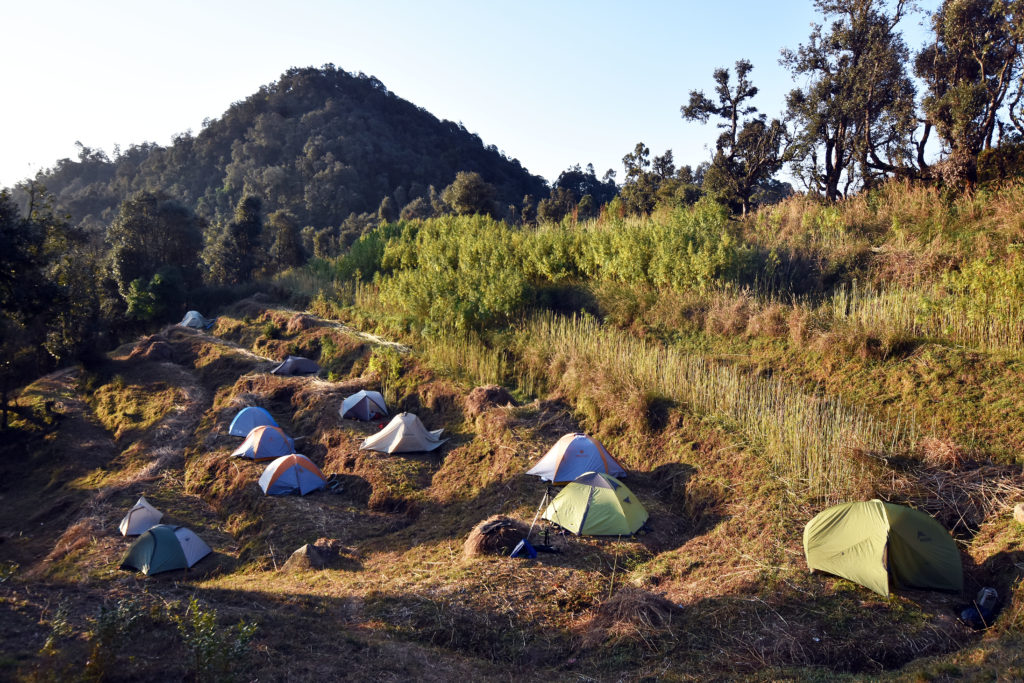
Shrines and temples to Lord Shiva and other Hindu deities stand near the villages and hilltops. The temple complex at Pinath overlooks a spring that marks the source of the Kosi River; the hilltop temple at Airadeo gives a wide angle view of the Himalayan Arc, from Api in Nepal to Himachal Pradesh.
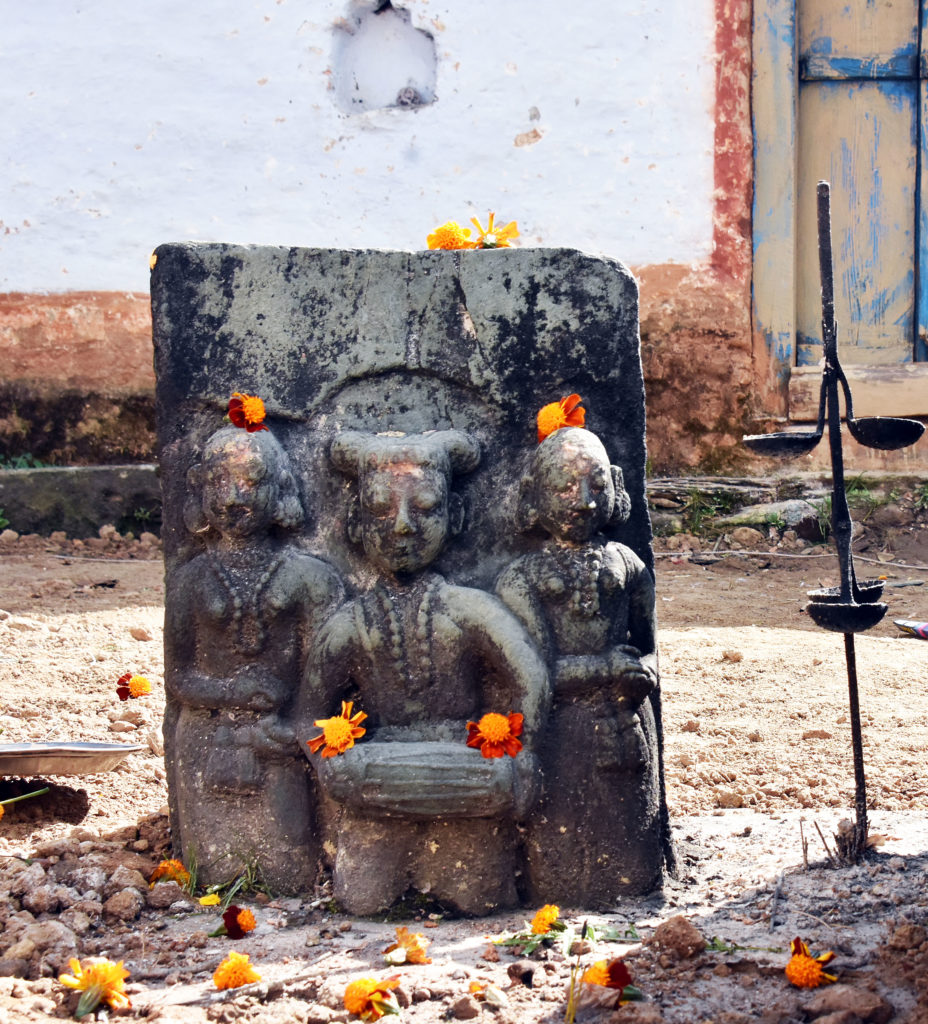
Our walk lasted nine days, with layovers at Pinath and Airadeo. Two of walking days were lengthy by my modest standards, but fit into the daylight hours. We finished in Dankuri village in time to celebrate the festival of Deepawali, complementing our reverence for all the good things with reckless fireworks and ‘extra-strong’ Kingfisher beer. Our Dankuri residence, leased by Wildrift Adventures, had been freshly painted and scrupulously cleaned for the festival. Come evening, it was brightly lit with colorful bulbs, small oil lamps and a couple of disco balls for the attention of Laxmi, Hindu Goddess of Wealth, who makes her round on this night, the post-harvest New Moon.
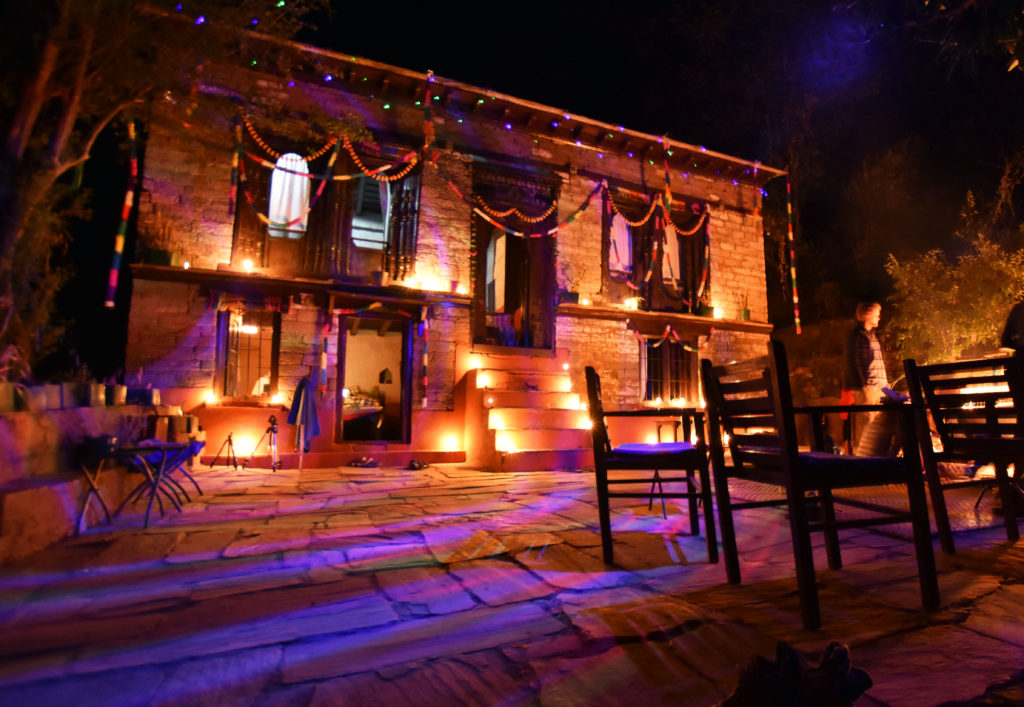
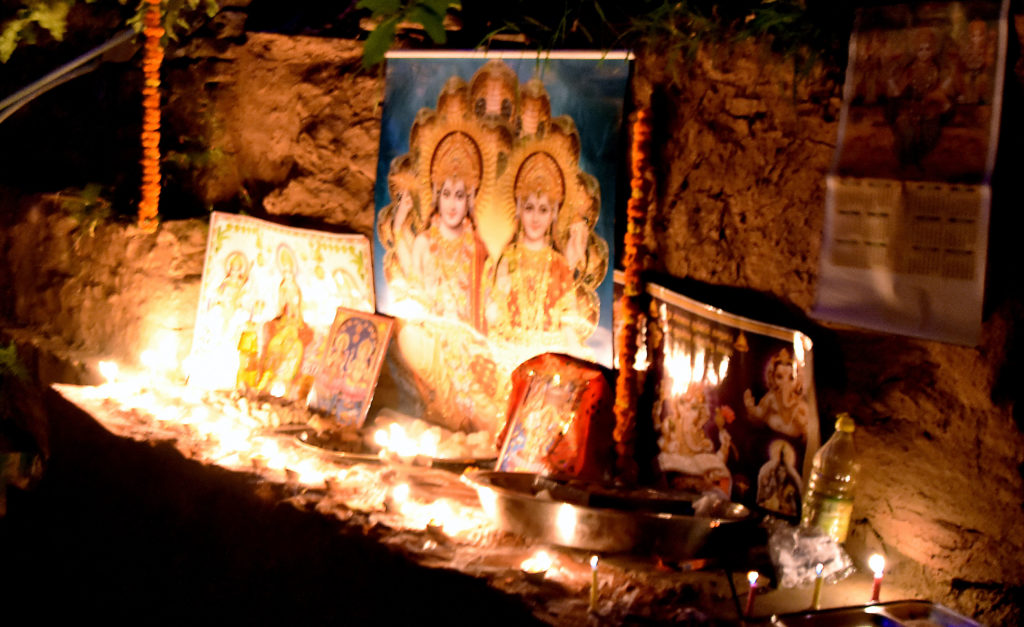
Exploring with my students, I sometimes call into question the alpine chauvinism so common among recreational visitors to the Himalaya. Granted, the lofty bits are distinctive and have good views, and there are fewer pathogens, parasites and allergens in the high alpine. The adversity of hypoxia and cold is a less-complicated sort of adversity than we typically encounter among the masses. And, of course, walking upslope to a well-defined summit can be profoundly gratifying. Even so, to grasp the cultural and biological diversity that make the Himalaya the most interesting mountain system in the world, it’s important to walk in the hills sometimes.
